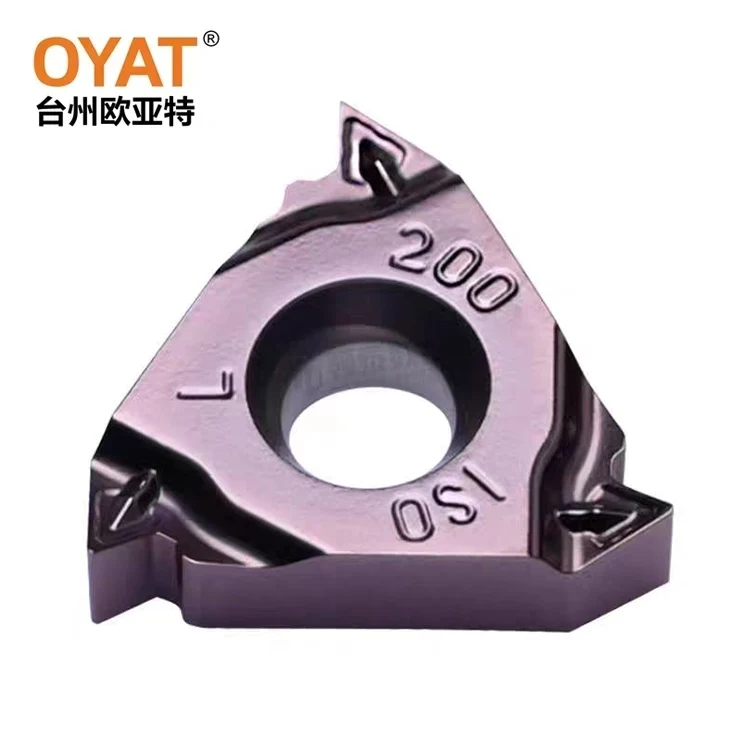How to Choose the Correct Turning Insert?
2025-04-28
Selecting the right turning insert is critical for achieving precision, efficiency, and long tool life in any machining operation. With numerous shapes, materials, and grades available, the process can seem overwhelming. However, understanding a few key factors will make choosing the correct insert straightforward and ensure optimal performance.
1. Identify Your Workpiece Material
The first step is to consider the material you will be machining. Different materials require different insert properties:
- Steel: Requires tough inserts, often with a hard coating.
- Stainless Steel: Needs inserts resistant to work hardening and high heat.
- Cast Iron: Works best with sharp inserts and high wear resistance.
- Non-Ferrous Metals (Aluminum, Copper): Benefit from highly polished, sharp inserts to prevent material build-up.
- Superalloys and Hardened Materials: Need specialized, heat-resistant inserts.
Selecting an insert grade and coating designed for your material will improve both tool life and finish quality.

2. Choose the Insert Shape
Insert shape affects the strength and flexibility of the cutting process:
- Round Inserts: Extremely strong, ideal for roughing and heavy interrupted cuts.
- Square and Diamond-Shaped Inserts (e.g., CNMG, DNMG): Offer multiple cutting edges and are excellent for general-purpose turning.
- Triangular Inserts (e.g., TNMG): Good for light to medium cuts, offering multiple edges while maintaining strength.
In general, use the strongest shape possible for roughing and more pointed shapes for finishing operations.
3. Select the Correct Insert Size
Larger inserts provide more strength and heat dissipation, but they require more machine power. Smaller inserts are ideal for light-duty operations and when machining small parts. Always ensure the insert size matches the holder and application requirements.
4. Pick the Right Insert Grade and Coating
Insert grades are determined by their composition (carbide, CBN, ceramic, etc.) and surface treatments:
- P Grades (Steel): Balanced toughness and wear resistance.
- M Grades (Stainless Steel): Good for dealing with built-up edges and heat.
- K Grades (Cast Iron): High wear resistance.
- N Grades (Non-Ferrous): Very sharp edges and smooth surfaces.
- S Grades (Superalloys): Heat resistance and toughness.
- H Grades (Hardened Steel): Extremely hard and wear-resistant.
Coatings like TiN (Titanium Nitride), TiAlN (Titanium Aluminum Nitride), or AlTiN are selected based on speed, feed, and material demands.
5. Consider the Nose Radius
The nose radius of the insert affects surface finish and strength:
- Larger Radius: Provides better strength and can handle heavier cuts but might cause chatter if the setup is not rigid enough.
- Smaller Radius: Produces finer finishes but is weaker and suited for light cuts.
A balance between surface finish requirements and cutting force stability is important when selecting the nose radius.
6. Determine the Cutting Conditions
Speed, feed, and depth of cut all influence insert selection:
- For high-speed, light cuts, use sharp inserts with a small nose radius.
- For heavy cuts, choose tougher inserts with a larger nose radius and stronger edge geometries.
Also, consider whether the cutting will be continuous or interrupted, as interrupted cuts demand tougher inserts to withstand impact.
Conclusion
Choosing the right turning insert is a combination of understanding your material, machine capability, cutting conditions, and the desired result. Taking the time to match the insert’s geometry, grade, and size to your specific application ensures better performance, longer tool life, and higher productivity.
If you need personalized advice or high-performance turning inserts for your machining needs, feel free to contact our technical team — we're here to help you achieve the best results!


